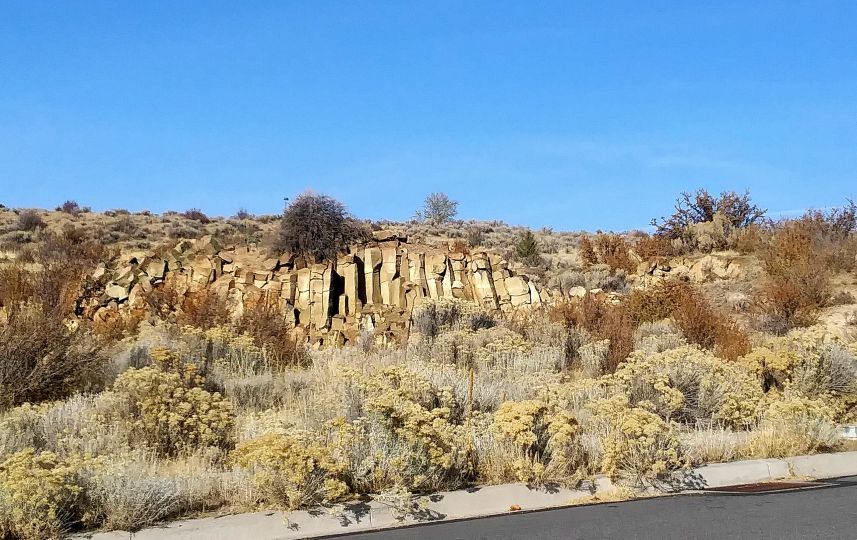March 2015 - May 1, 2023 4:20:37 GMT
|
Post by diane9247 on Dec 25, 2018 4:03:07 GMT
There is a hill north of Klamath Falls, Oregon, that consists of sections of sandstone columns, interspersed among ordinary soft sandstone. They were confusing (to this non-geologist) because they were not the usual black/grey of basalt columns. This website explains that these are indeed formed in proximity to volcanic activity, of which there has been a lot in the ancient past here, but I don't understand the explanation well. It seems that sandstone columns are found around the world, but are rare. Perhaps a geologist in the room could elaborate. (My photo)  Take a look at the two locations in the folder below, click the one at Hwy. 97 to see a great cross section of the hillside. Columns on top, pale, crumbly sandstone below. Chunks fall to the highway quite often, but they seem to come to a dead stop before reaching the asphalt. Columns.kmz (1.1 KB) |
|
Full Member
January 2020 - Jan 5, 2024 10:40:59 GMT
|
Post by leong on Jan 19, 2020 6:13:47 GMT
The answer is that sandstone naturally cracks into blocks.. almost cubic. Around the ocean and river cliffs here, the sydney basic, where the cliffs are sandstone, I see cubes and rectangular blocks, where the rock has been cracked off the solid strata by some process (rather than rolling down the side of the hill when the rest of the material around it has eroded away.. the remnant rocks are round not cubic. ) Sandstone cracks easily, and cracks into cubes and rectangular prisms. When the cracked rock , which existed as cubes, was raised varying amounts by the pressure from below (magma rising), the cubes extruded out as square coloumns. Have a look at the first of the Three Sisters, Katoomba. www.bluemts.com.au/imagesDB/gallery/DSC_0094_1.jpgThe rocks cracked off in cubes. As it happens, at the Three Sisters, the valley eroded and the rest of the stacks fell away, and the cracking was in 20 metre cubes rather than 50 cm cubes. Nearby at the Wentworth Falls, there is a stack that is still supported below, but not totally solidly , so it is seen as the stratra in the stack is offset dowward compared to the solid cliff. It just happens that the stack is leaning against the cliff rather than being prone to falling into the valley. Blue mountains is mostly caused by the rivers below eroding out the softer material , and letting the sandstone to crack off in blocks. Which it does at the same depth of cave, and so the cliffs form as almost flat surfaces, so some extent. variations in the cliff can then be found related to faults, and magna .. heating to make the rock harder , stronger, or deforming it. Now back at your volcanic stacks. Well , the magma below hardenned everything up below, so the stacks are not falling back down. |
|
March 2015 - May 1, 2023 4:20:37 GMT
|
Post by diane9247 on Jan 24, 2020 9:22:20 GMT
A most interesting explanation, leong! I wish I'd had it when I was in the Blue Mountains a few years ago. I do remember seeing sandstone everywhere I went and hearing the comment, "Sydney is built on sandstone." The walk to the opera house had the most wonderful exposed sandstone wall along its side. Now I'm inspired to go back to the site of this photo and take another look. Square or rectangular...?
|
|
Master Gamer
April 2018 - Apr 24, 2024 20:09:33 GMT
|
Post by willi1 on Jan 24, 2020 11:24:24 GMT
An example of the glazing of sandstone from Germany. To be found in the " Mühlsteinbrüchen" (millstone quarries) in the " Zittauer Gebirge" (Zittau Mountains, it's my home), called the Big and the Small Organ.
|
|





